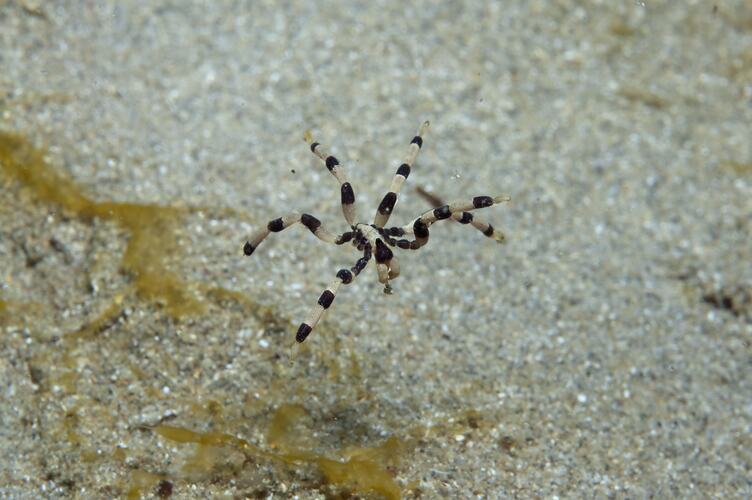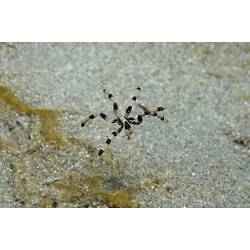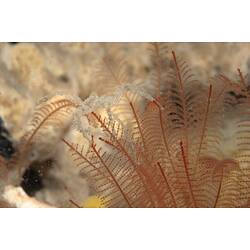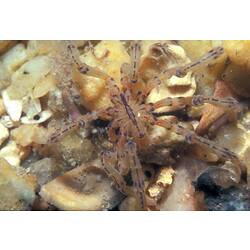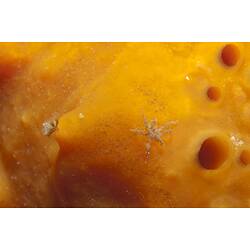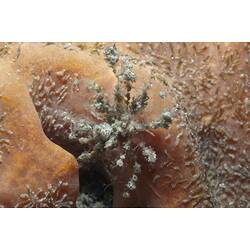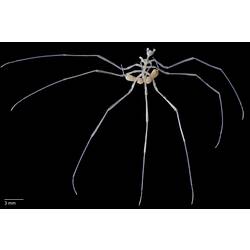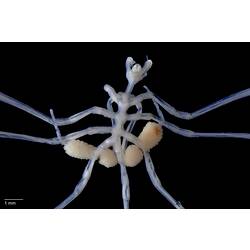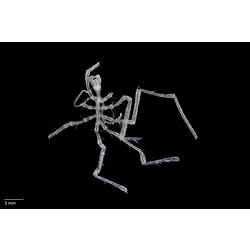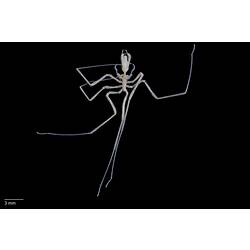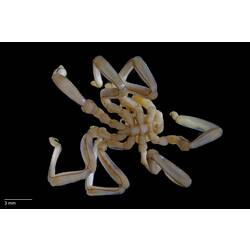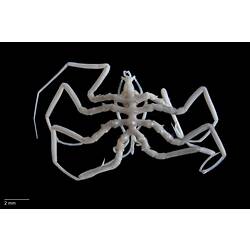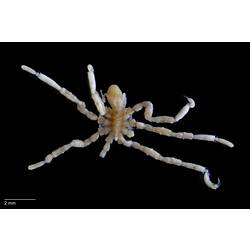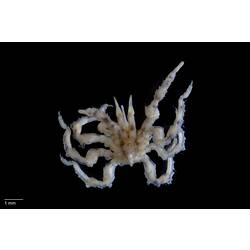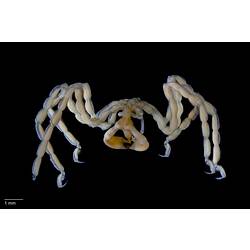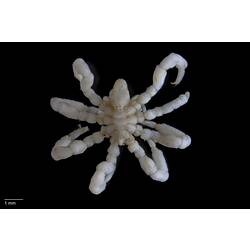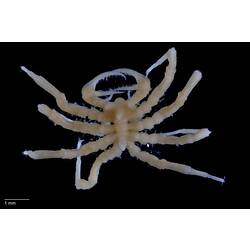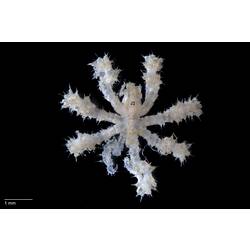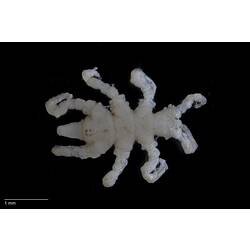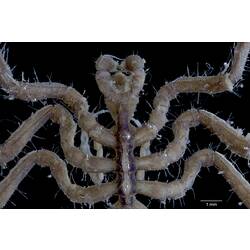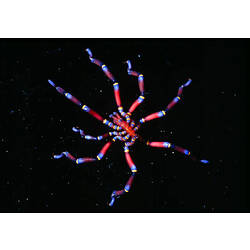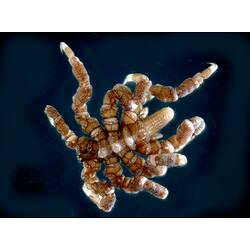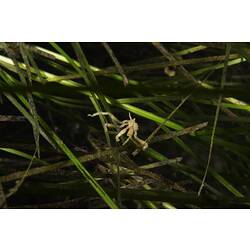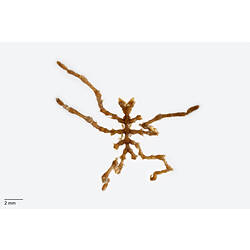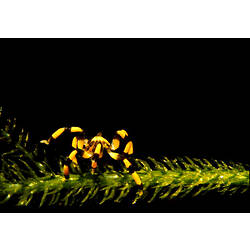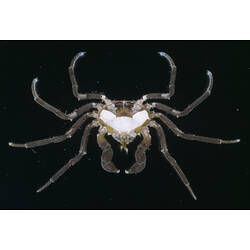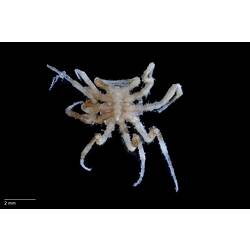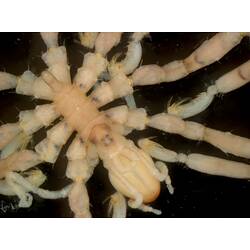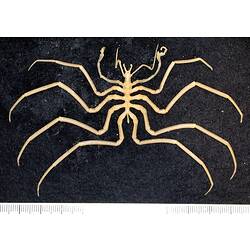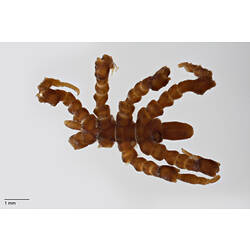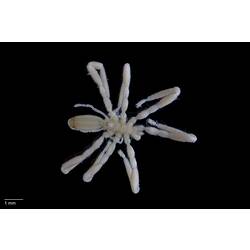General Description
At first glance pycnogonids appear to be little more than a collection of straws. The typical sea spider has eight legs but most unusually, some species have ten or twelve legs (though none so far recorded from Australia).
Biology
With their eight long, gangly legs the extraordinary sea spiders bear a striking resemblance to land spiders. Evidence indicates however that they are not closely related; in fact fossil records suggest that the sea spiders pre-date land spiders by millions of years and are amongst the oldest known Arthropods to inhabit the earth. These secretive creatures are a common component of the southern Australian shallow water fauna where they are usually quite small, with leg spans ranging from about 3 mm to 60 mm. Far off shore giant specimens, with leg spans often exceeding 50 cm, are a characteristic component of our deep-sea community. These deep-sea representatives live in darkness, under immense pressure and with water temperatures a little above freezing. Sea spiders belong to the phylum Arthropoda and like all Arthropods they need to shed their outer skin or moult in order to grow. Moulting is also a necessary means of getting rid of other organisms that sometimes grow on them, such as barnacles. Their success as a group can largely be attributed to their morphological simplicity, evidenced by the absence of organs dedicated to breathing, digestion or circulation. "Breathing" is by diffusion where oxygen is absorbed through the cuticle from the surrounding water. As they lack a digestive tract, food is broken down within the cells themselves (intra-cellular digestion), and nutrients extracted. Rather than a pumping heart, they contract their intestines (peristalsis) to help circulate their "blood" (hemolymph). Another major reason for their success as a group is their morphological plasticity (ability to easily change shape and size) which has enabled them to adapt to a wide range of substrates and food sources. Most species have eight legs, but some have ten or twelve. The distribution of the ten and twelve-legged species is quite strange. They are only found in the Antarctic with the exception of some ten-legged forms in the Caribbean. A Caribbean eight-legged species has been found east of Tasmania suggesting it is possible for species to travel, but why the ten and twelve legged forms have not made the same journey is not yet known. Most species are predators, feeding by sucking their food up through a proboscis, but some eat algae. They feed mostly on other invertebrates including, Polychaetes, Actiniarians (e.g. sea anemones), bryozoans and hydroids. Sea spiders have been observed to "swim" on currents and some are known for burrowing in sand.
Distribution
Worldwide. All Australian waters.
More Information
-
Animal Type
-
Fast Fact
It has been said that if you wanted to design a creature from outer space you could do far worse than choose a pycnogonid as your model!
-
Brief Id
Pycnogonids look superficially like spiders made of straws.
-
Maximum Size
60 cm
-
Habitats
-
Diet
Carnivore
-
Diet Categories
Invertebrates
-
Endemicity
-
Commercial
No
-
Depths
Shallow (1-30 m), Deep ( > 30 m)
-
Water Column Locations
On or near seafloor
-
Taxon Name
-
Phylum
-
Subphylum
-
Class
